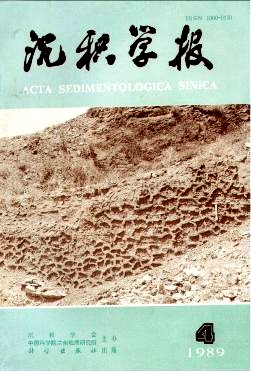EVOLUTION OF THE SEDIMENTATION AND TECTONICS OF LATE PALEOZOIC DANCHI BASIN
- Received Date: 1989-03-13
- Publish Date: 1989-12-10
Abstract: The Danchi Basin belongs to the secondary rift basin of Youjiang Rift Belt near the Jiangnan Oldland.The sedimentary fades can be divided into five fades area and thirteen facies belts, including dellaic, shoreline , tidal Hat, lagoonal clastic shelf, carbonate-clastic shelf, Restricted platformal, open platforraal, bioherm, platform-marginal slope, platform-shelf and basinal sediments.The main characteristics of the sedimentary facies are listed in table 4.The gross tendency of sedimentation is that terrigenous elastics are deposited near the margin of the oldland, and carbonates and silicalites are deposited far from the oldland, and mixed deposites consisting of carbonates and elastics are favourable in the transitional area. During the Devonian to Permian, the clastic deposits decrease with the carbonates increasing. The formation of the basin, sedimentation and distribution of facies and sequences in the area are controlled by the activities of synsedimentary faultings.The main characteristics of which are as follows: 1) The facies belts extend in the trend of the faults. The rifting forms linear depressional belts, and strike-slipping causes local rises and depressions, and the facies zones are distributed in "S" or "counter-S" type. 2) The bioherms were distributed in linear along the margin of platforms which is controlled by the activities of synsedimentary faults. They are asymmetrical on the profiles, and the reef-front talus occurs usually on the side near the faults. 3) There are special sedimentary types. When the linear depressional zones caused by the activities of the faults strentch to the margin of the oldland,- they often are as some passageways along which a large quantity of terrigenous elastics is transported into the basin, so that the very thick turbidite fans are formed.The activities of the faults on the transitional belts betwwen the platform and basin can cause so steep slopes that the large- scale debris flow deposition, turbidite deposition, slump and collapse accumulations occurred in the belts. 4) There are some distinctive syndepositional deformative structures, for example, extensive syndepositional slump folds, pillow sedimentary bodis and convolute layers, one of whose main characteristics is that they are limited in some layers. 5) The isopach strike is closely relative to the extension of the synsedimentary faults. 6) The activities of synsedimentary faults usually cause the suddenly change of facies. The evolution of the activities of the synsedimentary faults are from startion with the rifting of the faults with NW- trend, through the NW trend extensional fracturing in coupling faults with NNE trend strike-sliping, and finally, finishing with the NW strike-ship faulting.On the profile, the evolution of the Danchi Basin is characterized in form of a semi-graben to graben type.
| Citation: | Cheng Hongde, Zeng Yunfu, Li Xiaoquan. EVOLUTION OF THE SEDIMENTATION AND TECTONICS OF LATE PALEOZOIC DANCHI BASIN[J]. Acta Sedimentologica Sinica, 1989, 7(4): 85-96. |






 DownLoad:
DownLoad: